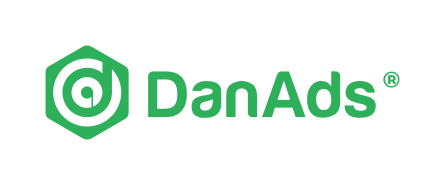Are you running an Ad Sales infrastructure to service your digital and/or print advertising sales? If so, then the question will already have been raised concerning a move to an automated self-serve advertising platform.
(See our blog on ‘What Is Self-Serve Advertising?’ for a simple description.)
Before you start investigating what is potentially a major evolution for your business from a traditional way of selling media, to a cost-effective automated marketplace; you need to identify how you sell inventory today, and where there are opportunities for automation.
Check off these 8 questions, to help ensure you are prepared.
1.How does your current marketplace function?
Do you have full knowledge on all the KPI’s of your current sales platform (digital and/or print)?
– Are you in control of all of your ad revenue, advertisers and booking
process? Do you use external suppliers or ad exchanges?
– Manpower costs for each part of the advertising booking process.
– Costs to service key advertisers vs costs to service the longtail SME
advertisers.
– Growth of new advertisers vs advertiser churn.
– Planned costs and time-line to scale up to grow revenue.
Understanding the real ‘costs vs ad revenue’ ratio is critical to evaluate the benefit of moving to an automated self-service platform which replaces much of these manual costs.
2. What is your advertising organisational structure?
Advertising is a simple transaction between you as a publisher selling and an advertiser purchasing. But the advertising operational structure required to service this transaction can be very complicated and have many touch points inside your organisation.
– Which processes are manual and which automated, invoicing for example?
– Which systems are integrated directly with other systems inside the company?
You need to be aware of all of these, as a self-serve platform will fundamentally change every one of them.
3. How are you servicing your advertisers today?
Google, Amazon and Facebook have all raised advertiser expectations on the level of service they provide through their self-serve ad buying platforms. Advertisers expect to have a high degree of control and 24/7 access to everything from invoicing to campaign data and reports.
Are your advertisers getting everything they need today, when they want it?
– What information can your advertisers access on their bookings?
– What campaign reporting do you provide?
– How easy is it for a new advertiser to make a booking?
– How are you staying in contact with your existing advertisers? Whats
your CRM system?
– Are you 24/7?
Understanding where you are failing to provide the best service for your advertisers today, will help you select the right self-serve platform for the future.
4. Who are your current advertisers and what is your future strategy?
Knowing your advertisers and the advertiser segments where you expect growth to come from is critical in assigning your resources and predicting the ad ops structure you will need.
– What is your ratio between direct advertisers and agencies?
– What percentage of your revenue comes from advertisers using an
ad exchange network outside of your control?
– Which advertiser segments are most profitable and which have the biggest potential for growth?
– Do you have a specific longtail advertiser strategy?
– How much control of your advertisers do you want?
A self-serve platform is going to give you control over your own advertising destiny, with the option to dedicate as much revenue as you want to your self-serve platform.
5. What are your advertising marketing resources?
Marketing is the life blood of any self-service advertising platform. Advertisers need to know it exists and they need to know how simple it is to use. Make sure you have thought about how you can promote a self-serve platform to all advertiser segments.
– Can you use your own online and offline media to promote?
– How large/effective is your advertiser database?
– Do you have skilled marketeers in the company?
Making the move to self-serve advertising sales is also about shifting your effort and resources from processing the order to marketing to drive awareness.
6. Who will manage a move to self-serve sales?
There are a number of different skills that you are going to need to handle the implementation and then the ongoing management of your self-serve platform.
– Technical. Who inside your company will handle the technical integration?
– Advertising.Who best understands your advertising set-up and advertiser marketplace?
– Marketing. Who will be responsible for your Self-Serve Marketing Strategy?
Make sure you have thought about putting the best team together to handle the project.
7. What is your existing technical infrastructure?
A self-serve ad platform is an infrastructure that integrates with a publisher’s current technology. It is a software designed as an isolated environment, located either on the supplier’s server (for example DanAds use Amazon Cloud Platform) or within the publisher’s network.
– Have a clear diagram mapping your current ad tech infrastructure.
– Know what systems supporting your advertising operations exist today
and if any of them are integrated.
– Get together any documentation on current processes and workflows
for each relevant department – ad operations, finance, marketing.
– See self-serve as an opportunity to overhaul an old tech
Infrastructure.
The more documentation you can provide, the easier it will be to brief any potential self-serve supplier.
8. Have you set up a timeline?
You may already have an internal timeline set for a project related to self-service advertising. If not, then it is worth planning one at the start so that you can manage internal expectations and also work realistically with your chosen self-serve supplier.
– Allow for internal information gathering and the creation of a ‘brief’.
– Allocate approximately 6 weeks for a supplier pitch process.
– Build in internal department ‘project buy-in’ time so that everyone is onboard.
– Remember that after hiring, the process should include not just a build phase, but also a ‘testing’ phase as well as a soft launch phase to bed in the platform before it is 100% ready. (see our blog on ‘How to Build a Self-Service platform for a step-by-step guide)
Hopefully, these 8 critical questions will have given you a solid foundation on which to start your transformation to automated self-serve advertising sales. It is an exciting move. Self-serve ad platforms are now a major tool for all publishers and media owners looking to generate incremental ad sales and manage costs. Just as programmatic changed the digital ad sales landscape by shifting power to the agencies and bigger brands, self-serve ad sales are now bringing the power back to you as a publisher.

Johan Liljelund
CTO & EVP, DanAds





